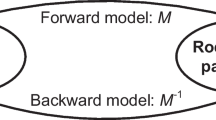Abstract
The main way that numerical error in seismic modeling manifests itself is through numerical dispersion brought on by coarse grids. Refining the mesh has the potential to minimize it, but doing so will result in an unacceptably high computational cost. Numerical Dispersion Mitigation network (NDM-net), a new technique that was recently created, is applied to the full dataset computed using a coarse mesh after the network has been trained using a relatively small number of seismograms that were previously computed using a fine mesh. The creation of the training dataset is the component of the procedure that requires the greatest computation. Therefore, reducing the quantity of precomputed seismograms may help the approach perform better as a whole. In this article, we describe a method for building the training dataset so that the difference between it and the full dataset does not go above the allowed limit.
Access this chapter
Tax calculation will be finalised at checkout
Purchases are for personal use only
Similar content being viewed by others
References
Ainsworth, M.: Dispersive and dissipative behaviour of high order discontinuous Galerkin finite element methods. J. Comput. Phys. 198(1), 106–130 (2004)
Billette, F., Brandsberg-Dahl, S.: The 2004 BP velocity benchmark. In: 67-th EAGE Conference and Exibition, p. B035. EAGE (2005)
Blanch, J., Robertsson, J., Symes, W.: Modeling of a constant Q: methodology and algorithm for an efficient and optimally inexpensive viscoelastic technique. Geophysiscs 60(1), 176–184 (1995)
Gadylshin, K., Lisitsa, V., Gadylshina, K., Vishnevsky, D., Novikov, M.: Machine learning-based numerical dispersion mitigation in seismic modelling. In: Gervasi, O., et al. (eds.) ICCSA 2021. LNCS, vol. 12949, pp. 34–47. Springer, Cham (2021). https://doi.org/10.1007/978-3-030-86653-2_3
Kaur, H., Fomel, S., Pham, N.: Overcoming numerical dispersion of finite-difference wave extrapolation using deep learning. In: SEG Technical Program Expanded Abstracts, pp. 2318–2322 (2019). https://doi.org/10.1190/segam2019-3207486.1
Koene, E.F.M., Robertsson, J.O.A., Broggini, F., Andersson, F.: Eliminating time dispersion from seismic wave modeling. Geophys. J. Int. 213(1), 169–180 (2017)
Kragh, E., Christie, P.: Seismic repeatability, normalized RMS, and predictability. Lead. Edge 21(7), 640–647 (2002)
Kragh, E., Laws, R.: Rough seas and statistical deconvolution. Geophys. Prospect. 54(4), 475–485 (2006)
Levander, A.R.: Fourth-order finite-difference P-SV seismograms. Geophysics 53(11), 1425–1436 (1988)
Lisitsa, V., Vishnevskiy, D.: Lebedev scheme for the numerical simulation of wave propagation in 3D anisotropic elasticity. Geophys. Prospect. 58(4), 619–635 (2010). https://doi.org/10.1111/j.1365-2478.2009.00862.x
Lisitsa, V.: Dispersion analysis of discontinuous Galerkin method on triangular mesh for elastic wave equation. Appl. Math. Model. 40, 5077–5095 (2016). https://doi.org/10.1016/j.apm.2015.12.039
Lisitsa, V., Kolyukhin, D., Tcheverda, V.: Statistical analysis of free-surface variability’s impact on seismic wavefield. Soil Dyn. Earthq. Eng. 116, 86–95 (2019)
Masson, Y.J., Pride, S.R.: Finite-difference modeling of Biot’s poroelastic equations across all frequencies. Geophysics 75(2), N33–N41 (2010)
Mittet, R.: Second-order time integration of the wave equation with dispersion correction procedures. Geophysics 84(4), T221–T235 (2019)
Ronneberger, O., Fischer, P., Brox, T.: U-net: convolutional networks for biomedical image segmentation. In: Navab, N., Hornegger, J., Wells, W.M., Frangi, A.F. (eds.) MICCAI 2015. LNCS, vol. 9351, pp. 234–241. Springer, Cham (2015). https://doi.org/10.1007/978-3-319-24574-4_28http://lmb.informatik.uni-freiburg.de/Publications/2015/RFB15a
Saenger, E.H., Gold, N., Shapiro, S.A.: Modeling the propagation of the elastic waves using a modified finite-difference grid. Wave Motion 31, 77–92 (2000)
Siahkoohi, A., Louboutin, M., Herrmann, F.J.: The importance of transfer learning in seismic modeling and imaging. Geophysics 84, A47–A52 (2019). https://doi.org/10.1190/geo2019-0056.1
Vishnevsky, D.M., Solovyev, S.A., Lisitsa, V.V.: Numerical simulation of wave propagation in 3D elastic media with viscoelastic formations. Lobachevskii J. Math. 41(8), 1603–1614 (2020)
Acknowledgements
The algorithm of optimal dataset construction was developed by Vadim Lisitsa, using the NKS-30T cluster of the Siberian Supercomputer Center, Dmitry Vishnevsky performed seismic modeling, while Kseniia Gadylshina carried out numerical experiments for NDM-net training with the help of RSCF grant number 22-11-00004. NDM-net hyperparameters were tuned by Kirill Gadylshin with the help of the grant for young scientists MK-3947.2021.1.5.
Author information
Authors and Affiliations
Corresponding author
Editor information
Editors and Affiliations
Rights and permissions
Copyright information
© 2022 The Author(s), under exclusive license to Springer Nature Switzerland AG
About this paper
Cite this paper
Gadylshin, K., Lisitsa, V., Gadylshina, K., Vishnevsky, D. (2022). Data-Based Choice of the Training Dataset for the Numerical Dispersion Mitigation Neural Network. In: Voevodin, V., Sobolev, S., Yakobovskiy, M., Shagaliev, R. (eds) Supercomputing. RuSCDays 2022. Lecture Notes in Computer Science, vol 13708. Springer, Cham. https://doi.org/10.1007/978-3-031-22941-1_28
Download citation
DOI: https://doi.org/10.1007/978-3-031-22941-1_28
Published:
Publisher Name: Springer, Cham
Print ISBN: 978-3-031-22940-4
Online ISBN: 978-3-031-22941-1
eBook Packages: Computer ScienceComputer Science (R0)




